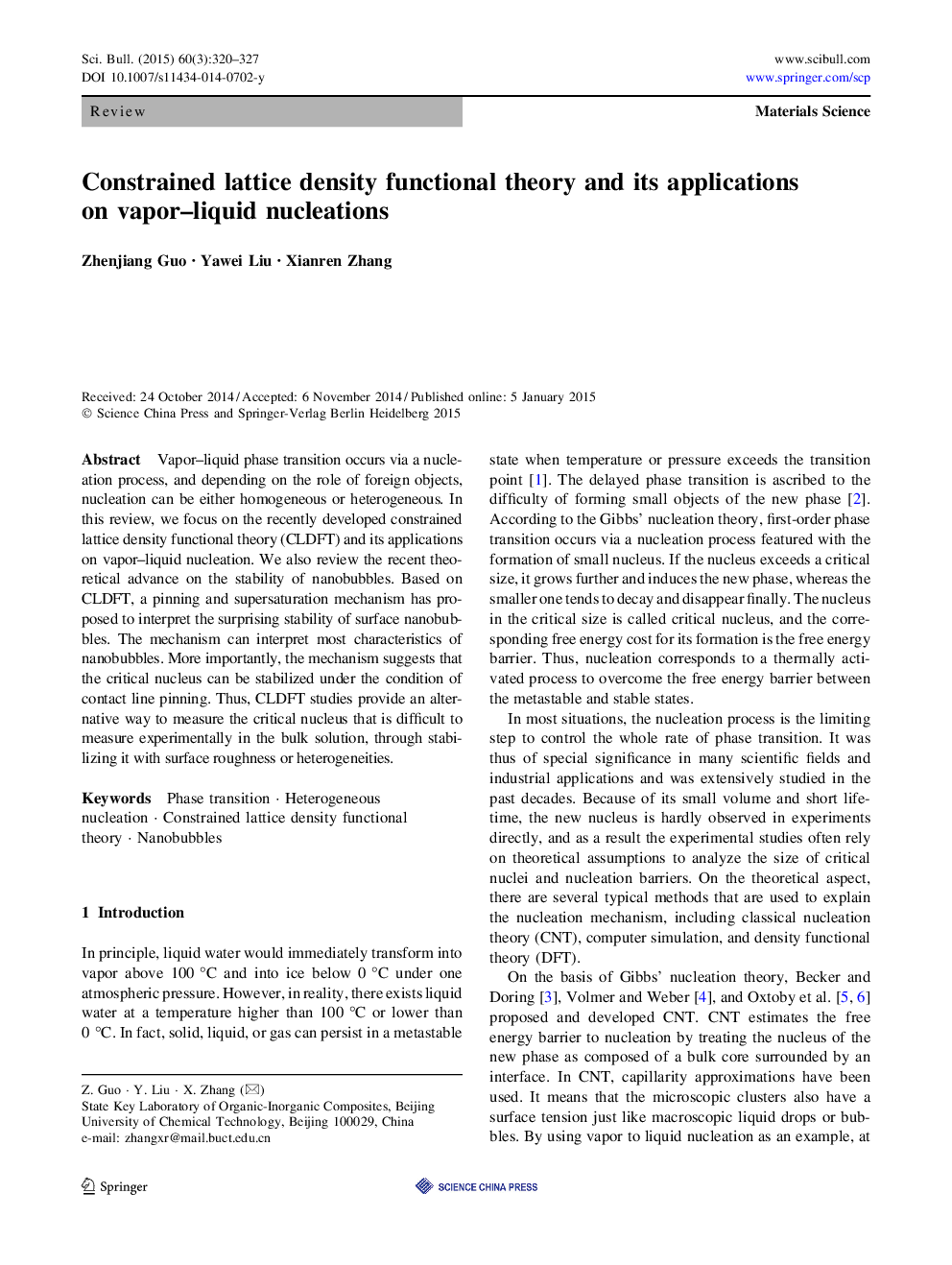| Article ID | Journal | Published Year | Pages | File Type |
|---|---|---|---|---|
| 5789243 | Science Bulletin | 2015 | 8 Pages |
Abstract
Vapor-liquid phase transition occurs via a nucleation process, and depending on the role of foreign objects, nucleation can be either homogeneous or heterogeneous. In this review, we focus on the recently developed constrained lattice density functional theory (CLDFT) and its applications on vapor-liquid nucleation. We also review the recent theoretical advance on the stability of nanobubbles. Based on CLDFT, a pinning and supersaturation mechanism has proposed to interpret the surprising stability of surface nanobubbles. The mechanism can interpret most characteristics of nanobubbles. More importantly, the mechanism suggests that the critical nucleus can be stabilized under the condition of contact line pinning. Thus, CLDFT studies provide an alternative way to measure the critical nucleus that is difficult to measure experimentally in the bulk solution, through stabilizing it with surface roughness or heterogeneities.
Related Topics
Physical Sciences and Engineering
Chemistry
Chemistry (General)
Authors
Zhenjiang Guo, Yawei Liu, Xianren Zhang,
